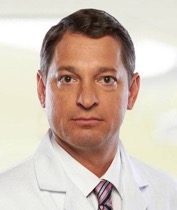Transvaginal Mesh Victims: Undiagnosed Pudendal Neuralgia Improved with Spinal Cord Stimulators

Spinal cord stimulators have been a useful treatment for causalgia or pain from nerve damage for years and has been used to treat interstitial cystitis.
SANTA BARBARA, CALIFORNIA, UNITED STATES, July 9, 2019 /EINPresswire.com/ -- Dr. John Paulson was first to report transobturator (TOT) slings as a cause of pudendal neuralgia in 2011, as he reported five women who presented to his clinic with symptoms consistent with pudendal neuralgia as outlined by the Nantes Criteria. Four of these women also had interstitial cystitis, also referred to as painful bladder filling syndrome.
The Nantes Criteria include pain from the anus to the clitoris, pain experience predominantly while sitting, burning, shooting, stabbing pain, allodynia, discomfort triggered by defecation, and a feeling as if there is a foreign body sensation in the rectum or vagina. Allodynia is simply normal sensation that is interpreted as pain, making it impossible for those with pudendal neuralgia to wear tight pants. Interstitial cystitis or painful bladder filling syndrome is a symptom of a disease and is likely caused by multiple mechanisms including pudendal neuralgia. The pain from interstitial cystitis like pudendal neuralgia is believed to be allodynia of the bladder, in that normal bladder filling is interpreted as pain.
Spinal cord stimulators have been a useful treatment for causalgia or pain from nerve damage for years and has been used for years in the treatment of interstitial cystitis.
In 2006, Spinal cord stimulators is a form of neuromodulation and is a useful therapeutic modality for ‘implacable urinary symptoms,’ as reported by Deborah L. Myers, MD and Dr. Vivian Sung, MD physicians at Brown Medical School and Women and Infants Hospital of Rhode Island. Sacral neuromodulation stimulation with the InterStim implantable system provides effective treatment for refractory urinary urge incontinence and urinary urgency with frequency alone or in combination with urinary retention.
In 2007, Dr. Kenneth Peters reported that direct stimulation of the pudendal nerve was more effective in controlling symptoms of interstitial cystitis compared to sacral nerve stimulation and 90% of patients involved in the study would undergo neuromodulation for the voiding dysfunction. This study did not differentiate the cause of interstitial cystitis, but simply those who met the criteria for interstitial cystitis which is simply painful bladder filling syndrome.
In 2014, Dr. Assia Valovska, Director of Pelvic Pain Management at Harvard Medical School, reported spinal cord stimulator as an effective treatment of pudendal neuralgia with documented improved function and less pain 4 years following the procedure.
Greg Vigna, MD, JD, practicing physician, Certified Life Care Planner, and national pharmaceutical injury attorney representing those with neurological complications from the transvaginal mesh in the Wave Discovery Procedure in the Transvaginal Mesh West Virginia Multidistrict Litigation, women waiting their turn for trial in the New Jersey Consolidated Litigation, and newly injured women in State Courts across the country, have reviewed cases where women received spinal cord stimulators for the diagnosis of interstitial cystitis with no mention that the TOT slings and the pelvic organ prolapse devices such as the Ethicon Prolift or Boston Scientific Pinnacle and Uphold has caused the interstitial cystitis. He states, “Interstitial cystitis is believed to be allodynia of the bladder, very much like pudendal neuralgia causes allodynia in the perineum. There is clear causation from the defective TOT as reported by Dr. Paulson to the bladder symptoms consistent with interstitial cystitis that led to the placement of the spinal cord stimulator. Each woman with a stimulator following a TOT or a POP device should be evaluated for pudendal neuralgia as there are other treatments that may improve their lives and neuromodulation effectively treats pudendal neuralgia and interstitial cystitis.”
https://www.painphysicianjournal.com/current/pdf?article=MjE3MA==&journal=84
https://onlinelibrary.wiley.com/doi/full/10.1111/j.1464-410X.2007.07082.x
https://www.ncbi.nlm.nih.gov/pmc/articles/PMC3183551/
Greg Vigna
Greg Vigna, M.D., J.D.
+1 805-617-0447
email us here
Visit us on social media:
Facebook
Twitter
Legal Disclaimer:
EIN Presswire provides this news content "as is" without warranty of any kind. We do not accept any responsibility or liability for the accuracy, content, images, videos, licenses, completeness, legality, or reliability of the information contained in this article. If you have any complaints or copyright issues related to this article, kindly contact the author above.
